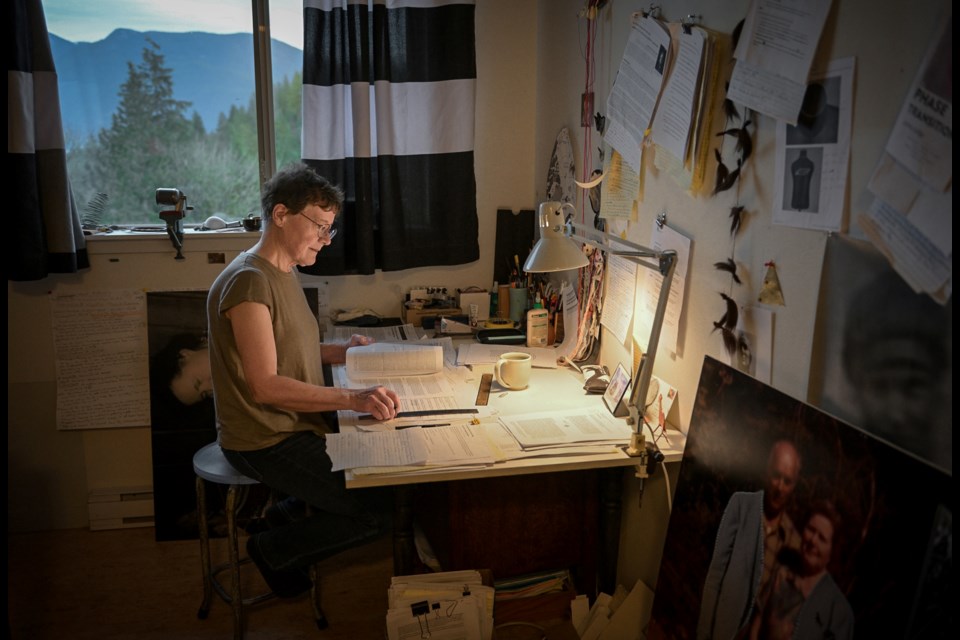The Bowen Island Community Foundation is pleased to welcome Fae Logie as 2024–26 Featured Artist.
This program celebrates Bowen Island artists and aims to expand the audience for their work. Logie’s art practice frequently responds to ecological challenges. In a group of works on paper, The Bark Drawing Series, the artist renders in charcoal, graphite, or conté crayon close-up views of the distinctive bark of each major species of coniferous trees within our coastal temperate rainforest — Douglas fir, Western hemlock, Sitka spruce, and Western red cedar.
The drawings present mural-sized details of each of the massive trees and impart a bodily awareness on the part of the viewer — “to one’s own as well as to that of the other,” the artist says. Logie upends the resource-extractive connotations of “taking a section” of each tree in what is fundamentally a project about preserving our forests.
The artist worked for over a year to complete each meticulously rendered drawing. She embraced slowness in her process, akin to the speed at which these giants grow, and engaged in deliberate, sustained looking at the trees not only to see but to better understand them — exemplifying the kind of persistence that environmental conservation efforts demand.
Logie has generously provided permission for the Foundation to reproduce Bark Drawing IV, Western Red Cedar on its printed cards during her tenure as Featured Artist. The Bowen Island Community Foundation wishes to highlight the significance of this species in our local history and culture.
Thuja plicata, Western red cedar, and in the Skwxwú7mesh language x̱ápay̓ay — the gracefully drooping, shade-loving conifer with distinctive plaited leaves and fragrant heartwood — has been central to human and other-than-human existence in the coastal temperate rainforests along the British Columbia coast for millennia. Often referred to by another name, Arborvitae, it is literally the tree of life.
For Indigenous communities, the red cedar holds deep spiritual and practical significance, providing bark for woven mats, rope, and clothing; straight-grained, durable, and rot-resistant wood for carved canoes, totems, and house posts. Red cedar has long been a valuable commodity in the resource extraction industries that are central to the economic history of this region, and it is the provincial tree of British Columbia.
Chronic annual drought conditions, exacerbated by a changing climate, casts a shadow over the coastal rainforests as scientists predict permanent changes in the cedar’s range amid widespread die-off of the species, which thrives in shaded, damp, and nutrient-rich habitats.
Logie holds an MFA from the University of British Columbia, a BFA from University of Victoria, and a BSc from Simon Fraser University. Since the mid-1980s, she has maintained an active, cross-disciplinary practice at the intersection of art and science, exhibiting in solo and group shows locally, nationally, and internationally. Her research-based projects are often rooted in ecology and a concern for the environment and involve thoughtful interrogations of place and history.
Logie’s art probes the intersection of identity and ecology, encompassing both wilderness and urban settings, and the relationships between humans and the natural world. Her work is characterized by a commitment to understanding the places we inhabit. To learn more about Fae Logie’s art practice, visit https://www.faelogie.com/
The Foundation looks forward to sharing more of Logie’s work with the community over the next two years.



